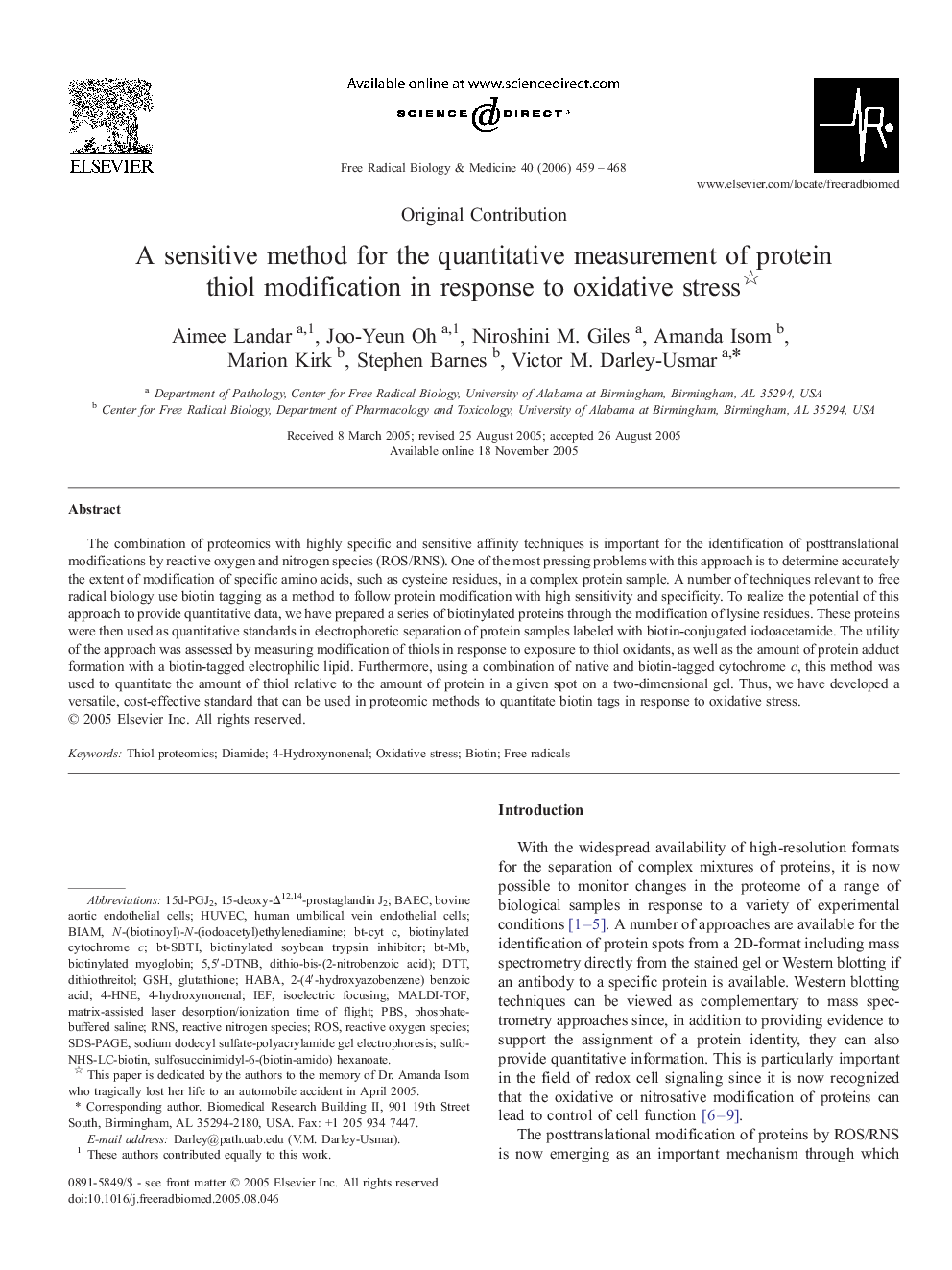| Article ID | Journal | Published Year | Pages | File Type |
|---|---|---|---|---|
| 1912019 | Free Radical Biology and Medicine | 2006 | 10 Pages |
The combination of proteomics with highly specific and sensitive affinity techniques is important for the identification of posttranslational modifications by reactive oxygen and nitrogen species (ROS/RNS). One of the most pressing problems with this approach is to determine accurately the extent of modification of specific amino acids, such as cysteine residues, in a complex protein sample. A number of techniques relevant to free radical biology use biotin tagging as a method to follow protein modification with high sensitivity and specificity. To realize the potential of this approach to provide quantitative data, we have prepared a series of biotinylated proteins through the modification of lysine residues. These proteins were then used as quantitative standards in electrophoretic separation of protein samples labeled with biotin-conjugated iodoacetamide. The utility of the approach was assessed by measuring modification of thiols in response to exposure to thiol oxidants, as well as the amount of protein adduct formation with a biotin-tagged electrophilic lipid. Furthermore, using a combination of native and biotin-tagged cytochrome c, this method was used to quantitate the amount of thiol relative to the amount of protein in a given spot on a two-dimensional gel. Thus, we have developed a versatile, cost-effective standard that can be used in proteomic methods to quantitate biotin tags in response to oxidative stress.
